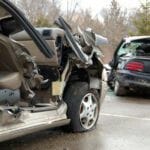A New Weapon to Fight DWT (Driving While Texting)
August 3, 2016 / Vehicle Accidents
The problem of texting while driving continues to grow. It is a known cause of distracted driving, which is responsible for a large number of crashes on our roads. Some studies put the number of wrecks as high as almost 70 percent of all accidents. But we don’t have accurate statistics regarding distracted driving, partly because it is easy for a driver in an accident to lie about whether or not they were texting or otherwise on their phone.
Practically all states ban texting while driving, with no exceptions; and many states ban all cell phone usage for at least some drivers, often school bus drivers and those under 18. The laws are in place, but drivers are not willing to admit that they were driving distracted in an accident.
New York State wants to change that—with the Textalyzer.
Think Breathalyzer
The Textalyzer gets its name from the Breathalyzer, which is used to test drivers for blood alcohol levels at the scene of an accident or traffic stop. The Textalyzer, in development by Cellebrite, an Israeli company, is similar in that its main use would be by a police officer on the scene.
Under current laws, officers must secure a warrant to see cell phone data, which is needed to prove distracted driving. But under the Textalyzer law proposed in New York, drivers in a crash would be required to hand over their phones for testing if the officers on the scene request them. If the drivers refuse, they would risk license suspension. That’s because the bill operates on the same legal grounds—“implied consent”—that enable police to employ a Breathalyzer.
But What About My Rights?!
Rest assured that the Textalyzer does not give an officer access to your phone’s content. It only provides a timestamp of each activity via the phone’s operating system, but not the content of any message sent. Your right to private communications is therefore not violated. The timestamps could prove whether a driver had been texting in the moments leading up to an accident. The Textalyzer would eliminate the problem of drivers lying about cell phone usage and enable accurate assessment of the reasons for a crash. Without a tool such as the Textalyzer, proving DWT is often impossible.
Why This Law Now?
The proposed law is also known as “Evan’s Law,” because one of the principals who worked with legislators lost a child to a distracted driver. The son of Ben Lieberman, a co-founder of Distracted Operators Risk Casualties, a New York organization, was killed in a 2011 crash. The group’s desire is to save lives, not violate an individual’s right to privacy.
The average driver who texts takes their eyes off the road for several seconds. That is long enough to travel 100 yards—a football field—at normal highway speeds. The U.S. Centers for Disease Control and Prevention have reported that, every day, between eight and nine people are killed, with 1,161 more injured, in distracted driver crashes.
In Indiana, using a cell phone to text is against the law for everyone, and all cell phone usage is illegal for drivers under the age of 18. If you must use your phone, park your vehicle safely before doing so.
When others breach their duty, we keep ours.
If you are researching the legal rights and resources available in the aftermath of a distracted driving crash, we hope you’ll consider calling Indiana attorney Mike Stephenson to talk about what happened. You can be assured that our lawyers, and our financial resources, are willing to go the distance on your behalf. Like other personal injury claims in Indiana, a distracted driving injury claim must be filed within two years of the date of injury, so don’t delay. We offer free consultations, and there is no fee for any of our work if we don’t win your case. Contact Mike today by calling 1-317-825-5200, or use our online contact form for a free legal consultation. Stephenson Rife: successfully litigating personal injury cases in Indiana since 1982.

 Mike Stephenson has 40 years of experience and is a trusted advisor to many individuals and companies. His current practice is dominated by civil litigation in state and federal courts. He focuses much of his time on handling catastrophic injuries caused by all types of accidents, including motor vehicle, trucking, workplace injuries, product liability, and fire, just to name a few. He also works extensively in construction accidents. [
Mike Stephenson has 40 years of experience and is a trusted advisor to many individuals and companies. His current practice is dominated by civil litigation in state and federal courts. He focuses much of his time on handling catastrophic injuries caused by all types of accidents, including motor vehicle, trucking, workplace injuries, product liability, and fire, just to name a few. He also works extensively in construction accidents. [ 